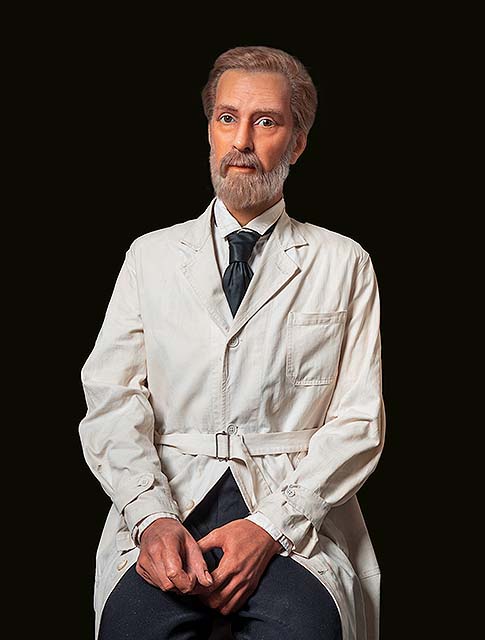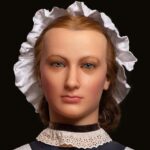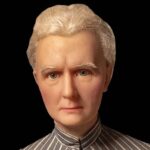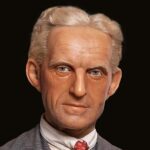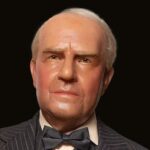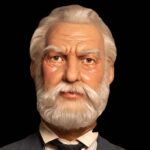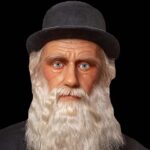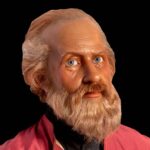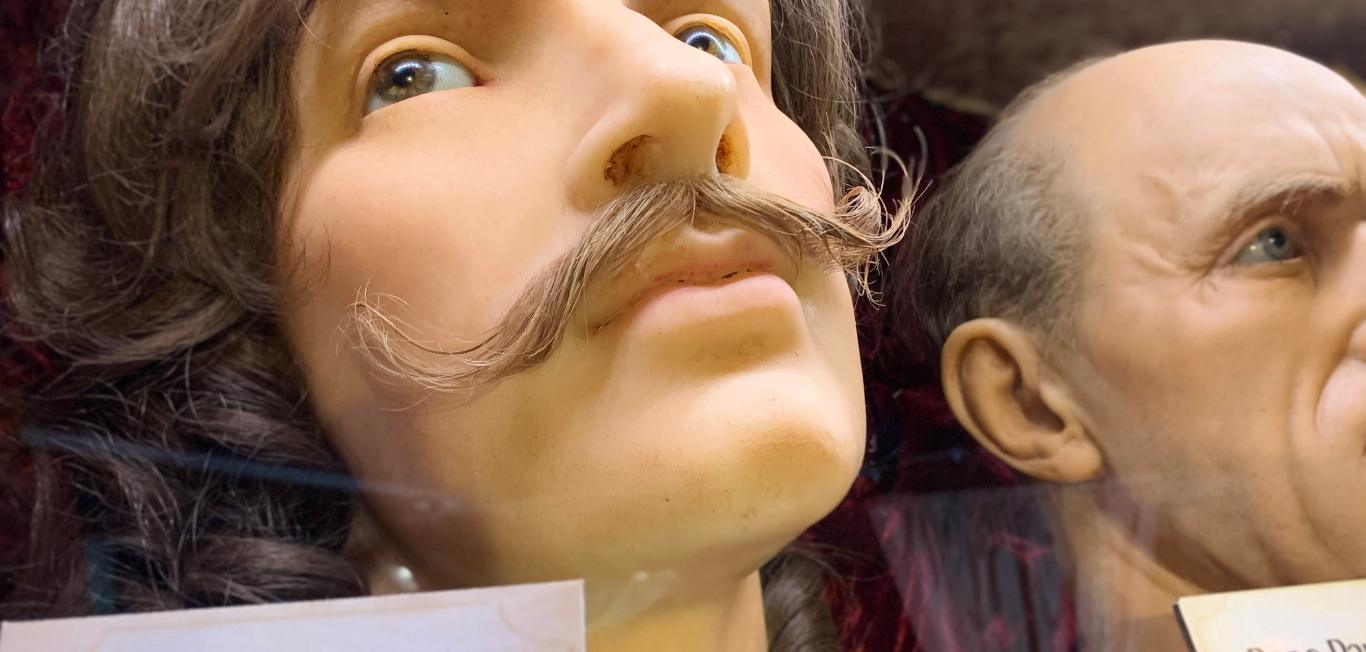Complete History of Louis Pasteur
Louis Pasteur was a renowned French scientist best known for his groundbreaking discoveries in both microbiology and immunology. His work was revolutionary to the fields of medicine and public health, and his contributions continue to profoundly impact the world today.
The biography of Louis Pasteur begins with his birth on December 27, 1822, in Dole, France. He grew up in a modest family and pursued his education, obtaining a doctorate in physical sciences in 1847.
In 1854, the University of Lille delegated Louis Pasteur the dean of the science faculty. This advancement in his career was an opportunity for Pasteur to conduct extensive research on the fermentation process. Through painstaking experiments, Pasteur was able to disprove the theory of spontaneous generation. With his findings, Pasteur presented the concept of biogenesis, which can be explained as living organisms arising from preexisting living matter.
By 1861, Pasteur had published his findings on pasteurization, a process named after him. He discovered that heating liquids such as milk and wine to specific temperatures could kill harmful microorganisms, ultimately preventing spoilage and disease transference. This breakthrough critically impacted the food and beverage industry and significantly improved public health standards.
One of Pasteur’s most renowned achievements was the development of vaccines. In 1885, he successfully created the first vaccine for rabies. By experimenting on animals, Pasteur discovered that the disease could be weakened by exposing the virus to air. The rabies vaccine has saved numerous lives and laid the groundwork for future advancements in immunology.
DID YOU KNOW?
One of Pasteur's most renowned achievements was the development of vaccines.
Louis Pasteur’s work was not limited to scientific research alone, as he also passionately advocated for hygiene practices. These efforts led to the establishment of the field of bacteriology and the application of sanitation measures in hospitals and surgical procedures. Pasteur’s commitment to public health and his revolutionary discoveries crucially impacted medical communities as well as societies as a whole.
The work of Louis Pasteur was widely recognized and celebrated throughout his lifetime. Pasteur received prestigious awards and honors, including the Copley Medal from the Royal Society. Today, his name lives on through the Pasteur Institute, which is a world-renowned research institute dedicated to studying infectious diseases and promoting public health.
On September 28, 1895, in Marnes-la-Coquette, France, Louis Pasteur died, leaving behind an enduring legacy of a quest for scientific knowledge and improved human health. Pasteur’s work continues to inspire scientists and researchers alike, as his discoveries and principles remain fundamental to our understanding of microbiology and immunology, as well as the prevention and treatment of infectious diseases.
Interesting Facts About Louis Pasteur
Louis Pasteur’s groundbreaking discoveries related to chirality provided undeniable proof to the world that sickness is caused by germs, not supernatural entities or miasma.
One of Louis Pasteur’s most notable contributions was the development of a process that is widely recognized today: pasteurization.
Pasteur developed three major vaccines to ward off chicken cholera, anthrax, and rabies infections.
To test his immunological discovery, Pasteur developed an experiment monitoring two groups of 25 sheep. One group received two shots of a diluted anthrax sample; the other group received one shot of the full-strength anthrax sample.
Concerned about the potential misuse of his discoveries, Pasteur opted to not disclose his findings and instead shared inaccurate information about his process for weakening anthrax. Pasteur stated that he used oxygen to dilute the substance.
Although Pasteur’s method would later create a safe and efficacious vaccine, it is crucial to recognize that engaging in dishonest practices ultimately undermines the integrity of scientific research.
Pasteur’s rabies vaccine proved to be successful and effective.
In the early 1880s, Pasteur obtained brain tissue from rabbits infected with rabies and subsequently weakened the virus in them. He then used dogs as his subjects to evaluate the vaccine, yielding successful results.
Early Life of Louis Pasteur
Louis Pasteur is a notable figure in the history of science, best known for his work in microbiology and immunology. Pasteur began to display an interest in natural science as a young man at university. His life’s work gained recognition due to his notable achievements and scientific brilliance.
In his early years, Pasteur was an average student and demonstrated a strong interest in art and drawing. At the Collège Royal in Besançon, where he earned his baccalauréat degree at the age of 16, he began to excel academically and demonstrate a strong proficiency in mathematics and science. His academic achievements secured him a scholarship to pursue higher education at the École Normale Supérieure in Paris.
At the École Normale Supérieure, Pasteur immersed himself in his scientific pursuits, focusing on chemistry and physics under the mentorship of renowned scientists such as Auguste Laurent. Pasteur’s dedication and commitment to his studies launched him to the top of his class, and he received his doctorate in physical sciences in 1847.
Discovering details of the phenomenon of chirality was one of Pasteur’s early achievements that showcased his talents. As explained in his 1848 paper, Pasteur found that certain chemical compounds exist in two mirror-image forms known as enantiomers. This development led to advancement in stereochemistry, which laid the foundation for his future work in microbiology and vaccine development.
DID YOU KNOW?
In his early years, Pasteur was an average student and demonstrated a strong interest in art and drawing.
Another of Pasteur’s early contributions was in the field of crystallography. He successfully proved a link between the shape of crystals and their chemical composition. His findings on tartaric acid crystals, which show asymmetry, supported his research on chirality and its significance in chemistry and biology.
Pasteur’s exploration into the process of fermentation played a critical role in his scientific journey. He conducted thorough experiments to understand the role of microorganisms in the fermentation of alcoholic beverages and the decomposition of wine. Through his studies, Pasteur disproved the widely accepted theory of spontaneous generation and introduced the concept of biogenesis.
Louis Pasteur’s early life was marked by his intellectual curiosity, meticulous scientific inquiry, and revolutionary discoveries. His accomplishments in stereochemistry, crystallography, and fermentation laid the foundation for his future achievements in microbiology, immunology, and public health. These early milestones not only displayed his remarkable intellect but also set the stage for his innovative contributions that would reform the scientific community and benefit humanity for generations to come.
Louis Pasteur’s Accomplishments
Louis Pasteur earned his doctorate degree from the University of Paris in 1847. During his time there, Louis Pasteur’s experimentation in the realms of physics and chemistry pivotally marked his academic journey and future success in the scientific community.
Louis Pasteur revolutionized medicine in the 19th century through his experiments identifying microorganisms that carry disease. These discoveries advanced the field of immunology, helping in understanding and treating infectious diseases.
Until the mid-19th century, post-surgical infections were a serious and common complication. Louis Pasteur’s experiments in microbiology aided his work with fermentation and putrefaction, which helped identify that bacteria in the air causes the decay of body tissue.
Carbolic Steam Spray was a disinfection technique of applying carbolic acid directly onto wounds and surgical tools for sanitization. This invention advanced the practice of antiseptic medicine.
The discovery of proteins in cancer cells and of techniques to identify cellular components and their role in cancer biology was made possible due to Louis Pasteur’s experiments.
Through Louis Pasteur’s experiments with the process of fermentation, he blazed a trail through the field of immunization, building the foundation for the invention of the polio vaccine.
On February 19, 1857, Louis Pasteur published his seminal paper on the microbial association among disease, fermentation, and vaccines. Pasteur’s paper included the meticulous details of his research and highlighted his revolutionary contributions to the scientific community.
Louis Pasteur Late in Life
French chemist and microbiologist, Louis Pasteur, was a renowned scientist who made remarkable contributions to revolutionizing medicine and biology throughout his career. In Pasteur’s later life, he continued his scientific pursuits, leaving a lasting legacy of achievements that revolutionized various fields and moved humanity forward.
In Pasteur’s later years, he remained steadfast in his research, continuing to make significant breakthroughs. One of his renowned achievements was the development of the first successful vaccine for rabies. The vaccine had its first success in 1885. Pasteur treated a nine-year-old boy who had been bitten by a rabid dog. He inoculated the boy with a series of progressively diluted doses of the rabies virus, successfully preventing the onset of the disease. This revolutionary accomplishment brought hope to countless individuals and cemented Pasteur’s reputation as a pioneer in immunology.
Pasteur’s research also expanded into the field of agriculture. He investigated diseases affecting silkworms and developed methods to prevent their spread. His findings led to the establishment of sericulture (breeding) stations, where farmers could collect healthy silkworm eggs and protect their silk production from devastating diseases. This work profoundly impacted the silk industry and helped boost economic growth in regions reliant on sericulture.
Moreover, Pasteur’s study of fermentation and the role of microorganisms in the spoilage of consumables led to the development of pasteurization. He discovered that heating substances to specific temperatures could kill harmful microorganisms, allowing a prolonged shelf life for products such as milk and wine. Pasteurization soon became a widely adopted technique that significantly reduced the risk of foodborne illnesses and ensured the safety of consumables.
In addition to his scientific achievements, Pasteur played a prominent role in establishing scientific institutions. He actively participated in creating the Pasteur Institute in Paris, which was dedicated to studying infectious diseases and vaccine development. The institute became a leading center for research and continues to be a prestigious institution in the field of microbiology.
In contrast to his numerous achievements, Pasteur’s late life was spent in Marnes-la-Coquette, France, overtaken by health issues. He suffered a series of strokes and died soon after on September 28, 1895, at the age of 72. His death was a significant loss to the scientific community, but his contributions continue to inspire innovation and further scientific advancement.
DID YOU KNOW?
Pasteur discovered that heating substances to specific temperatures could kill harmful microorganisms, allowing a prolonged shelf life for products such as milk and wine.
Louis Pasteur’s accomplishments influenced several fields, transforming the foundations of medicine, microbiology, and agriculture. His dedication, innovative thinking, and meticulous scientific methods revolutionized our understanding of infectious diseases, fermentation, and immunization. Pasteur’s work has not only saved countless lives but developed a framework for future advancements in science and medicine.
Today, the legacy of Louis Pasteur lives on through his discoveries and through institutions such as the Pasteur Institute. The ever-growing research inspired by his groundbreaking work continues to shape the way we approach scientific inquiry and has left a permanent mark on the progress of humanity.
FAQs
How old was Louis Pasteur when he died?
Louis Pasteur passed away on September 28, 1895, at the age of 72.
When was Louis Pasteur born, and when did he die?
Louis Pasteur was born on December 27, 1822, in Dole, France, and died on September 28, 1895, in Marnes-la-Coquette, Hauts-de-Seine, France.
Who was Pasteur’s first human subject for the rabies vaccine? Was his treatment successful?
Louis Pasteur’s first subject was a nine-year-old boy named Joseph Meister. Joseph was bitten by a rabid dog, and Pasteur treated him with a series of progressively diluted doses of the rabies vaccine. The vaccine treatment was a success and Joseph went on to live a healthy life.
Why is Louis Pasteur famous?
Louis Pasteur is famous for his groundbreaking contributions to science and medicine. His most notable contributions include those to the germ theory of disease, pasteurization, and vaccines, as well as to the revival of the silk industry and to the establishment of the Pasteur Institute.
